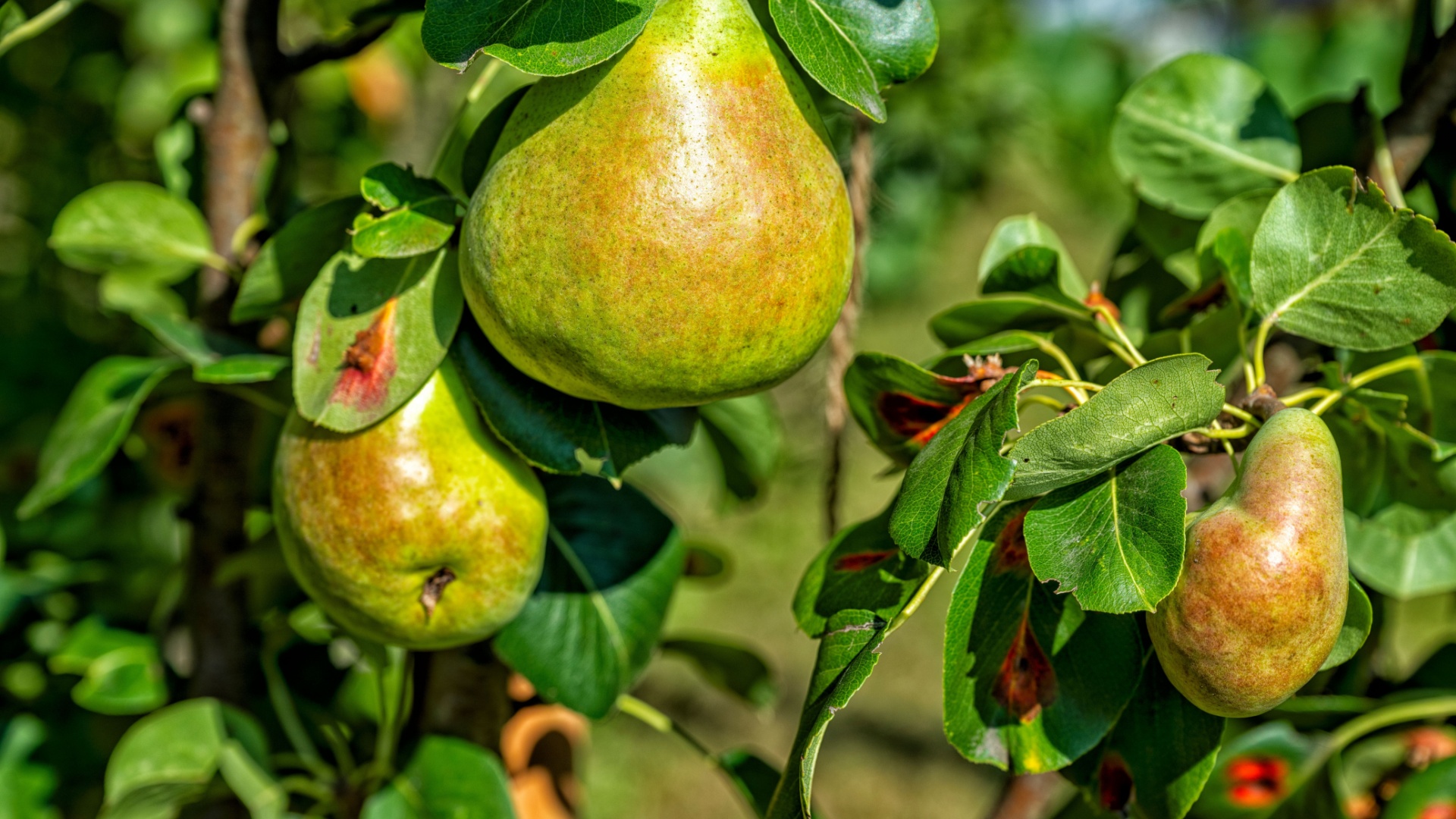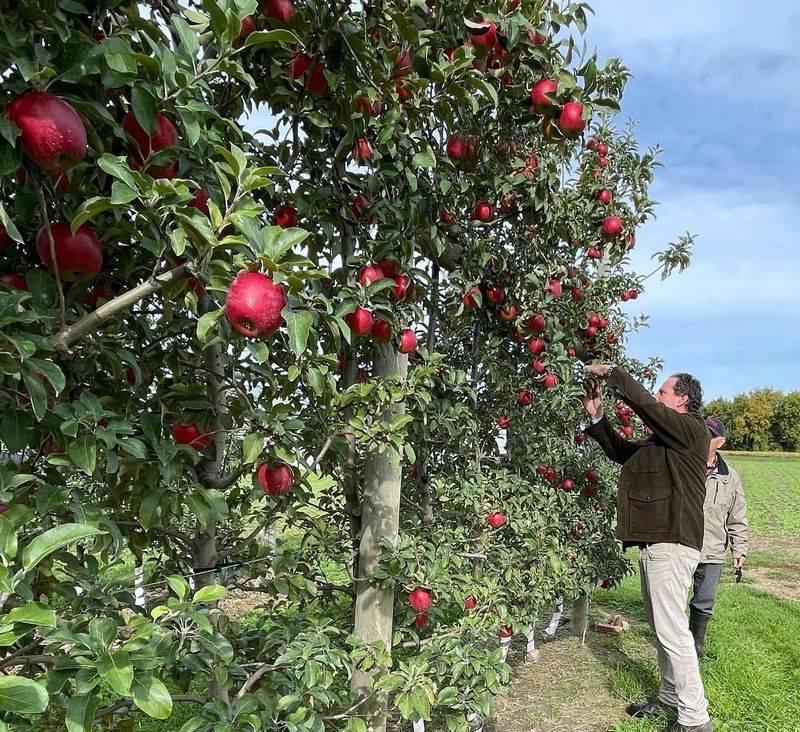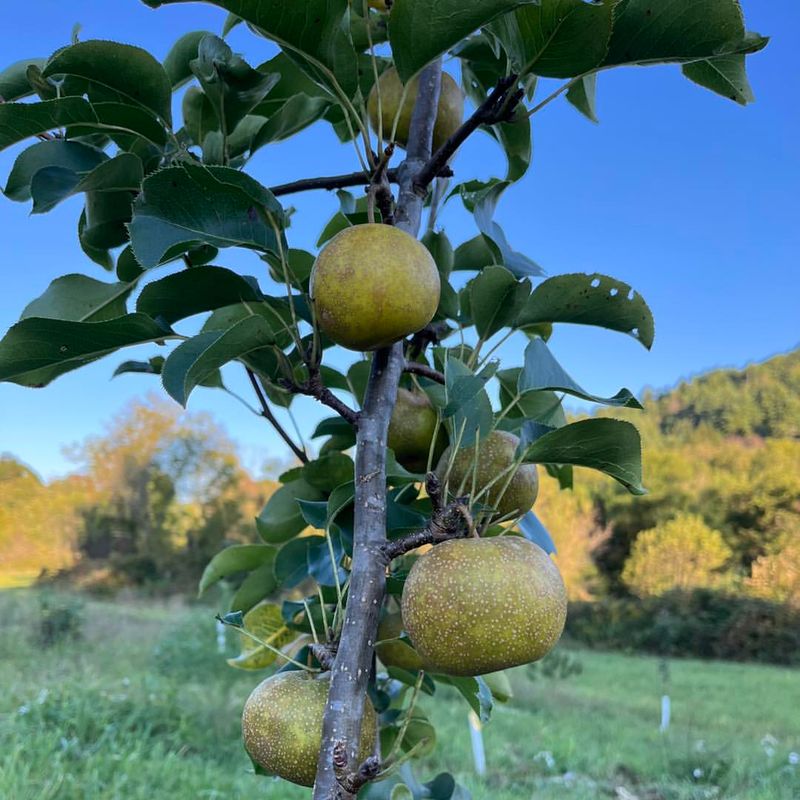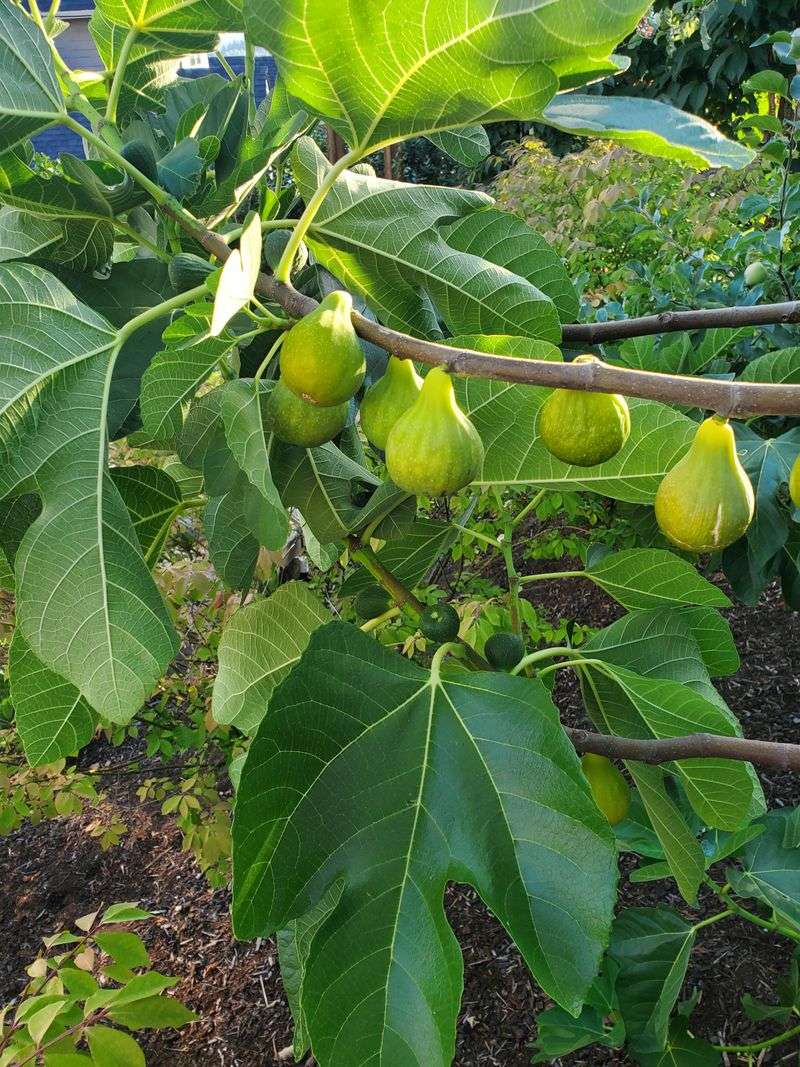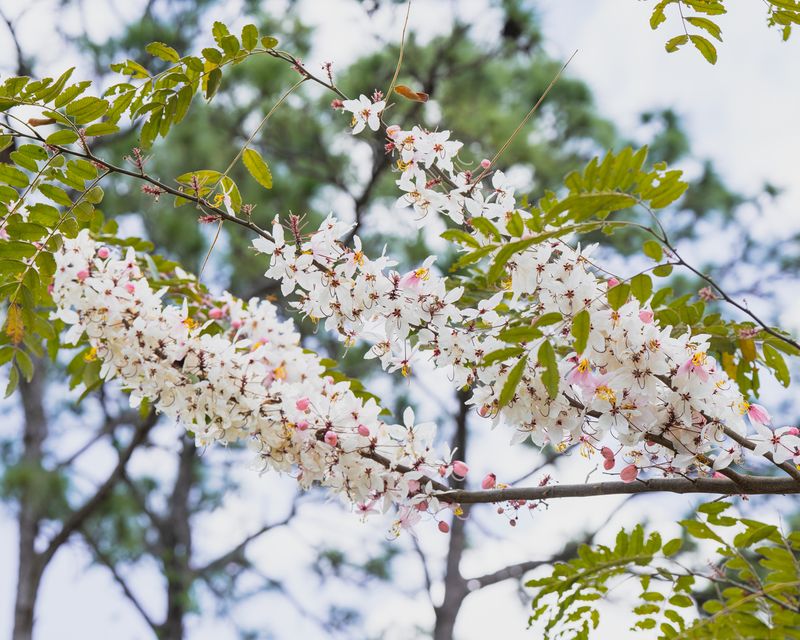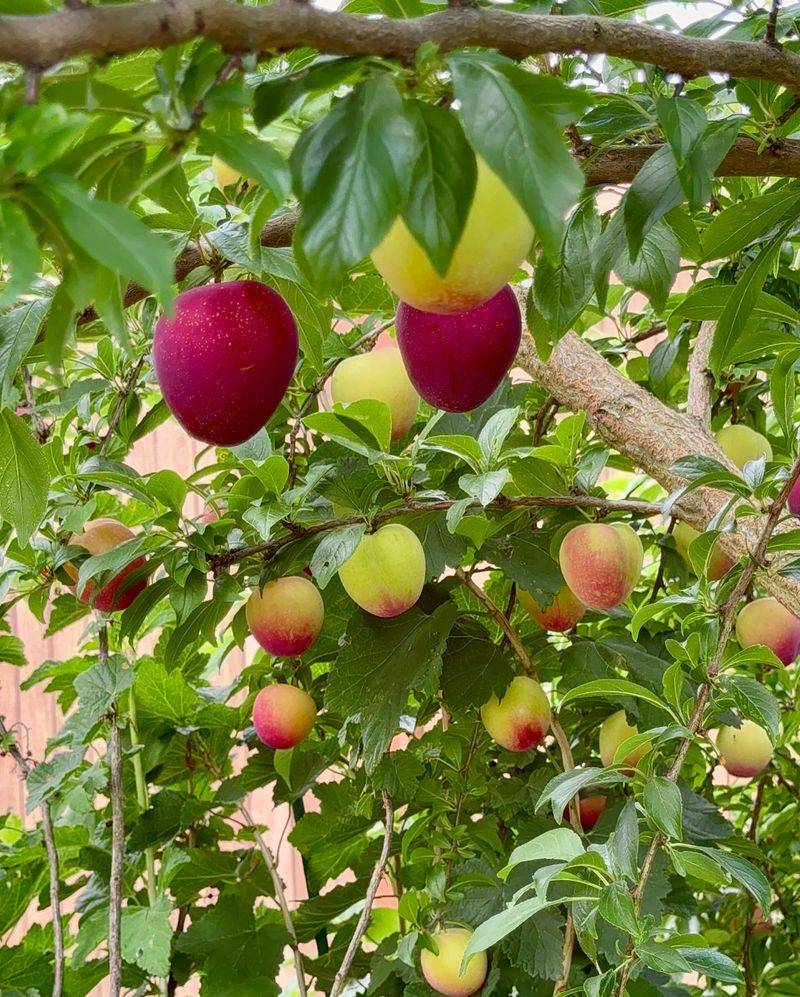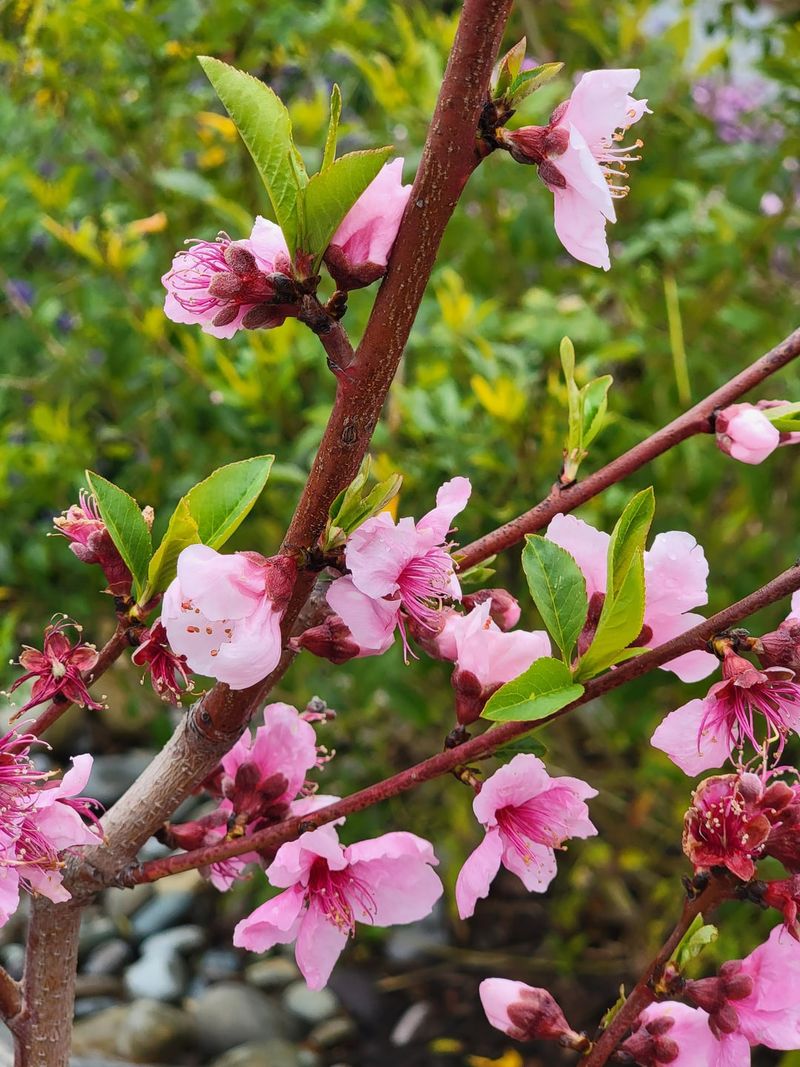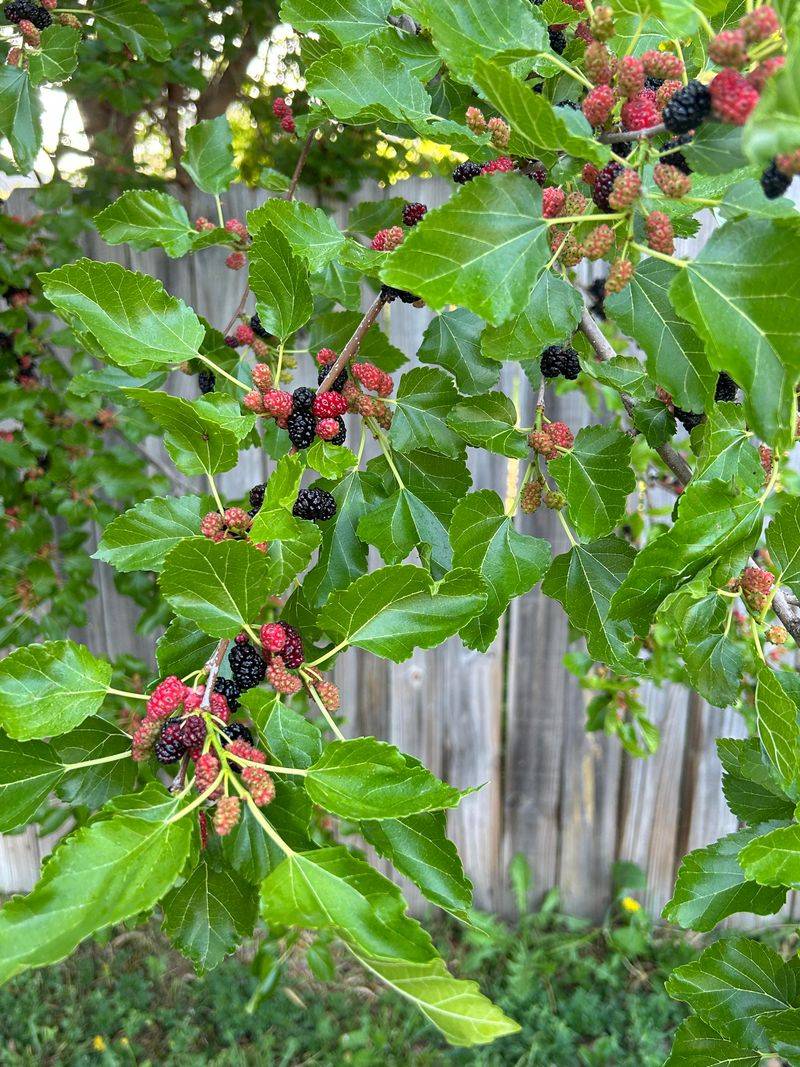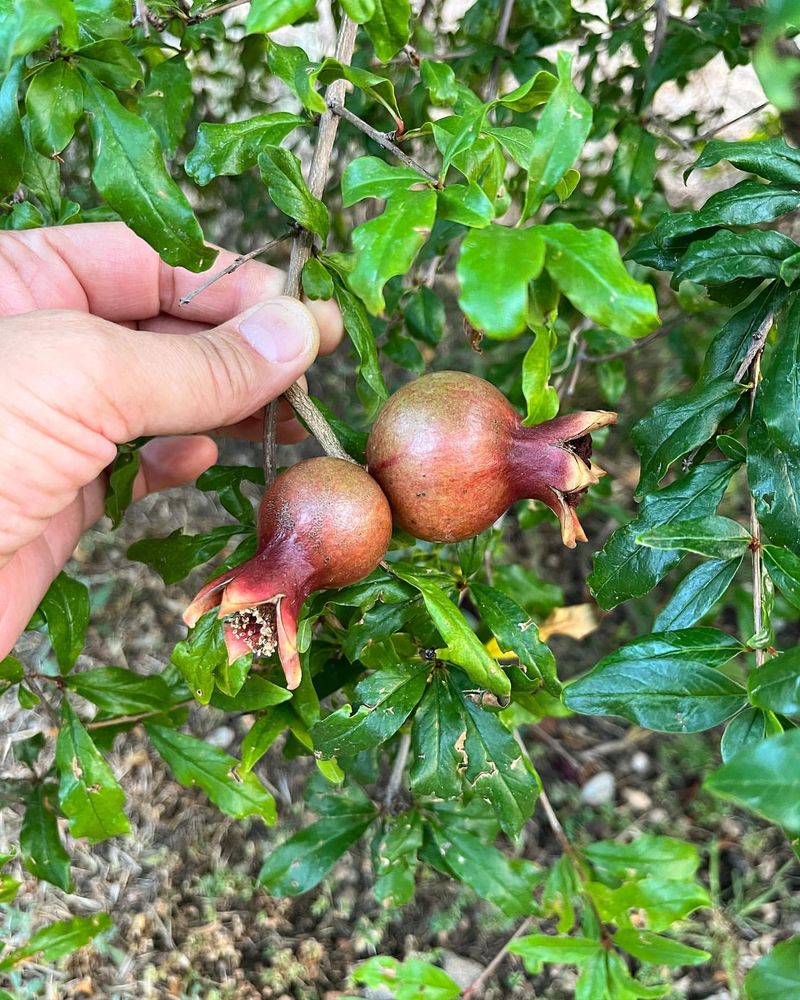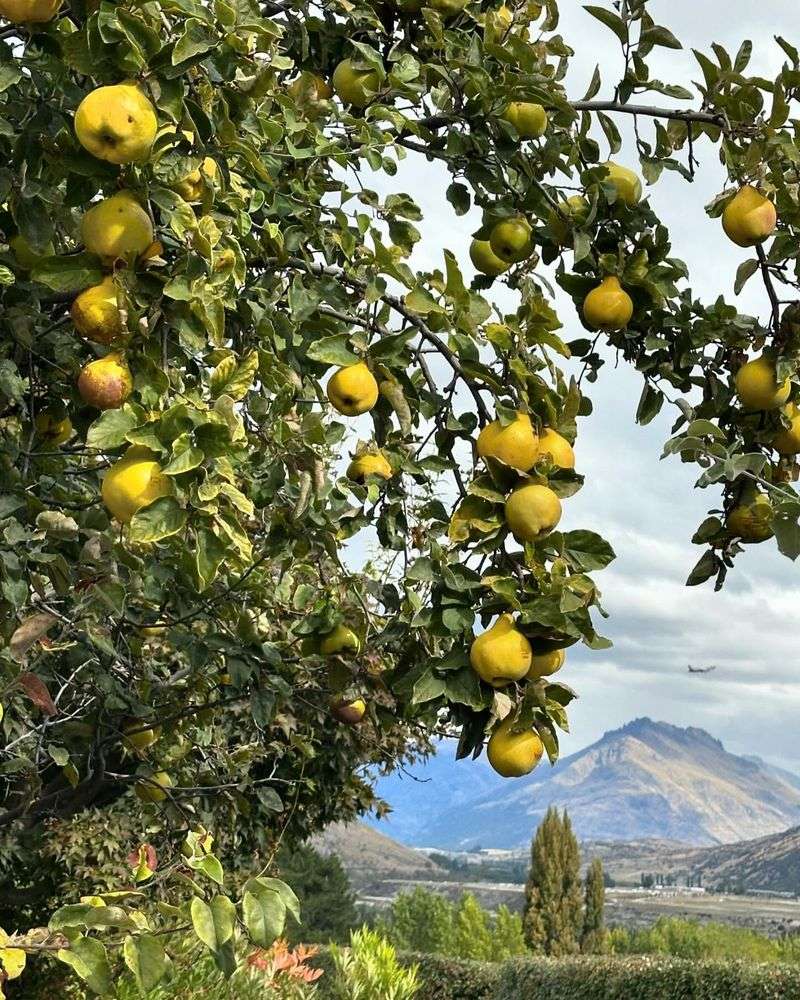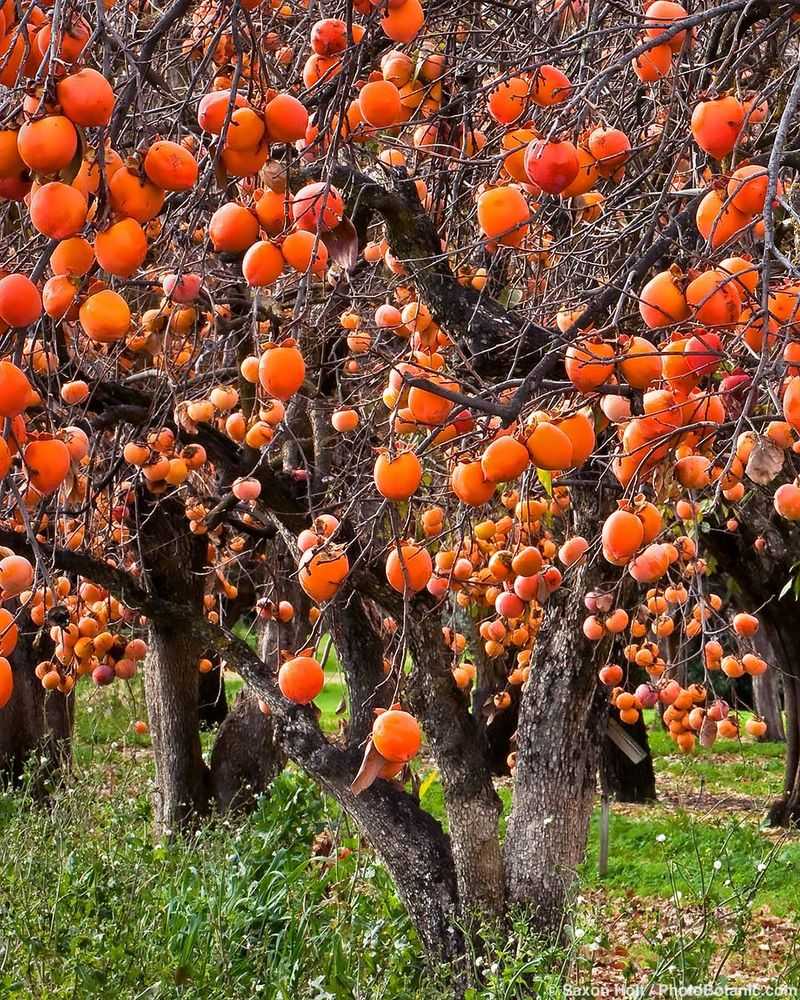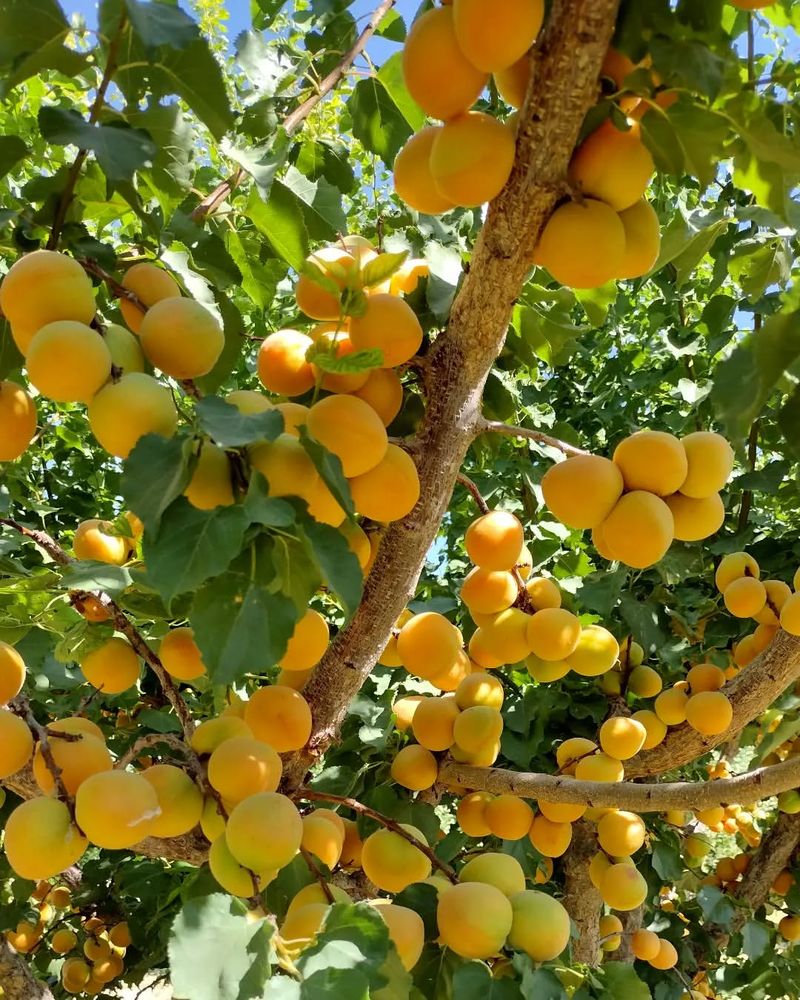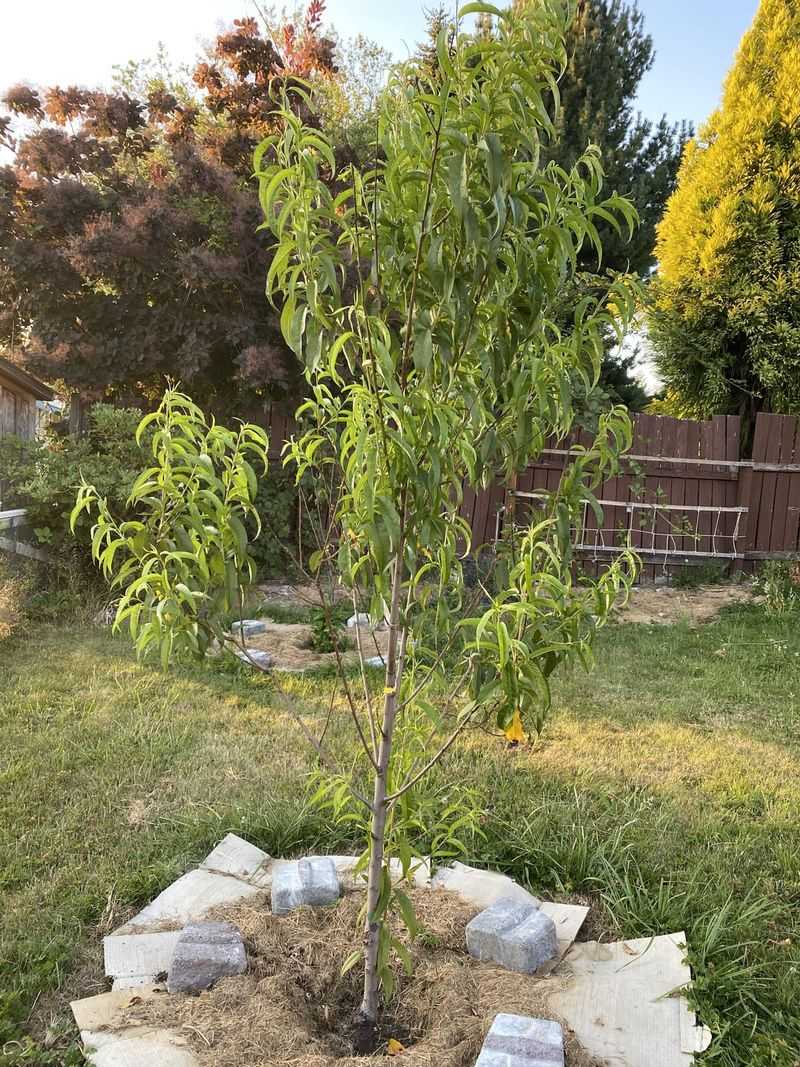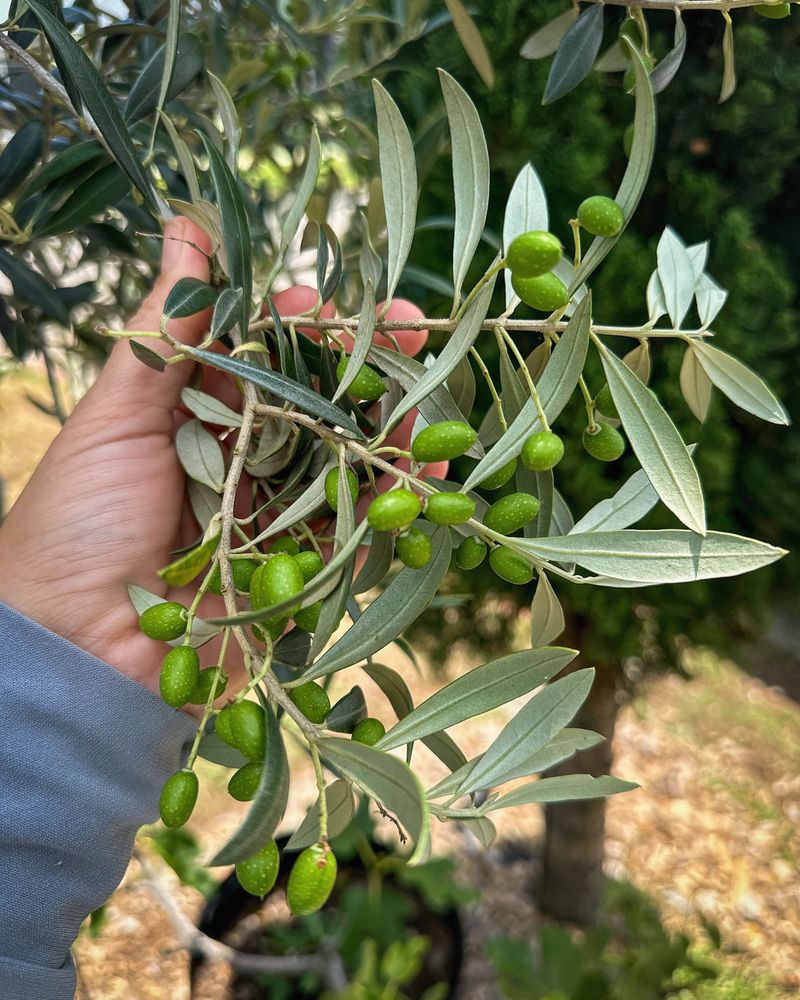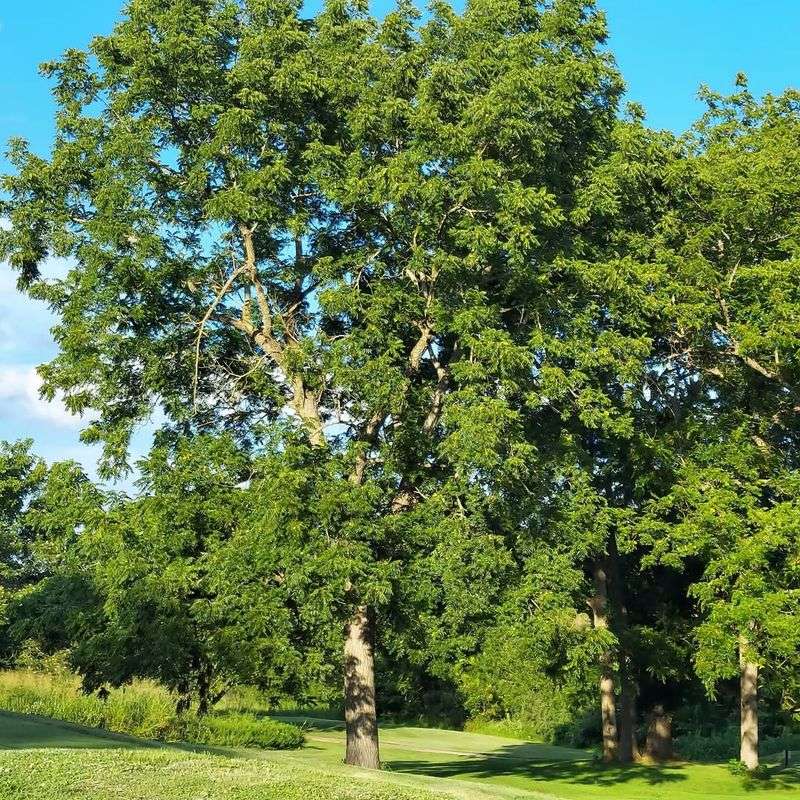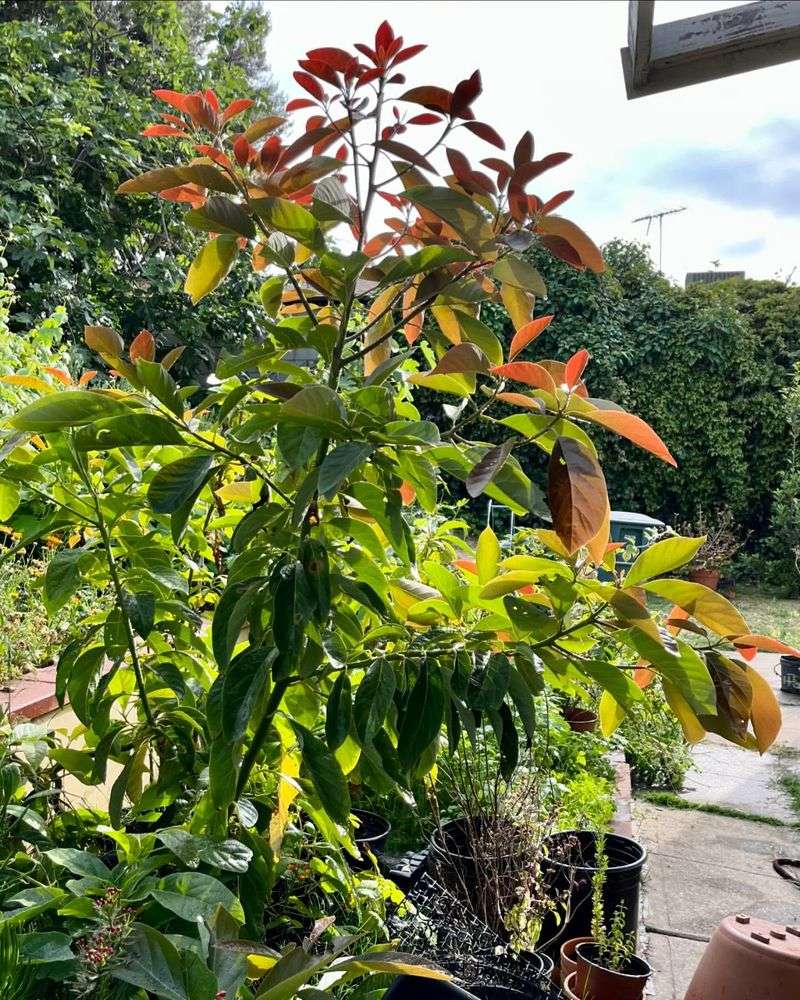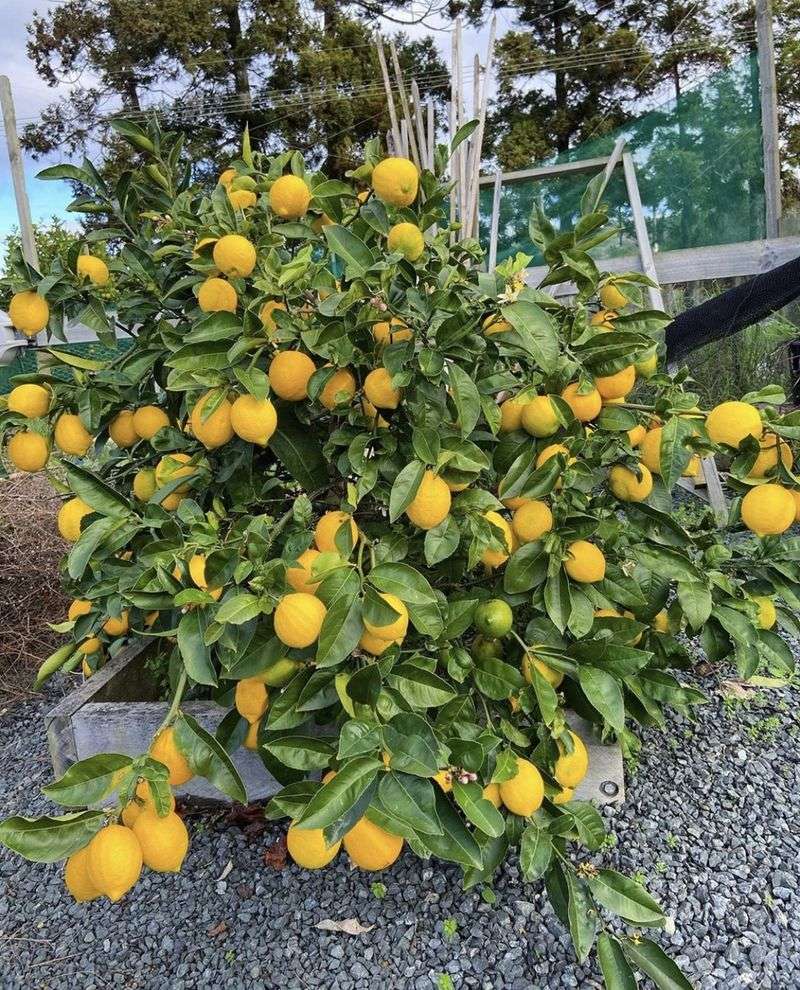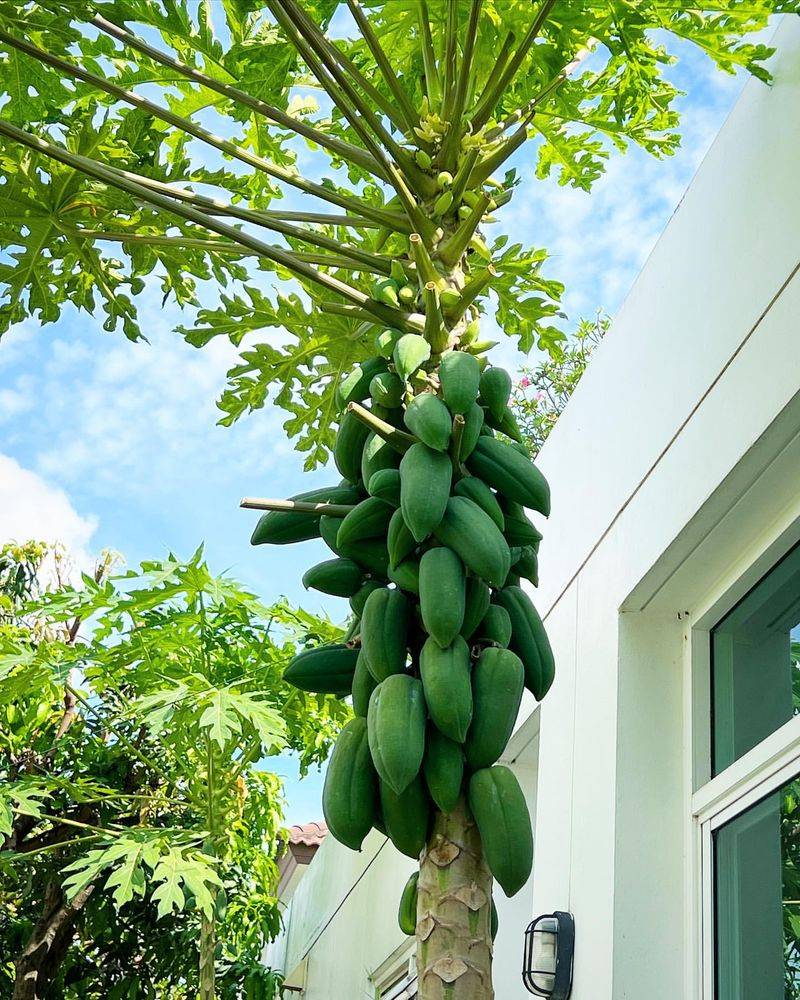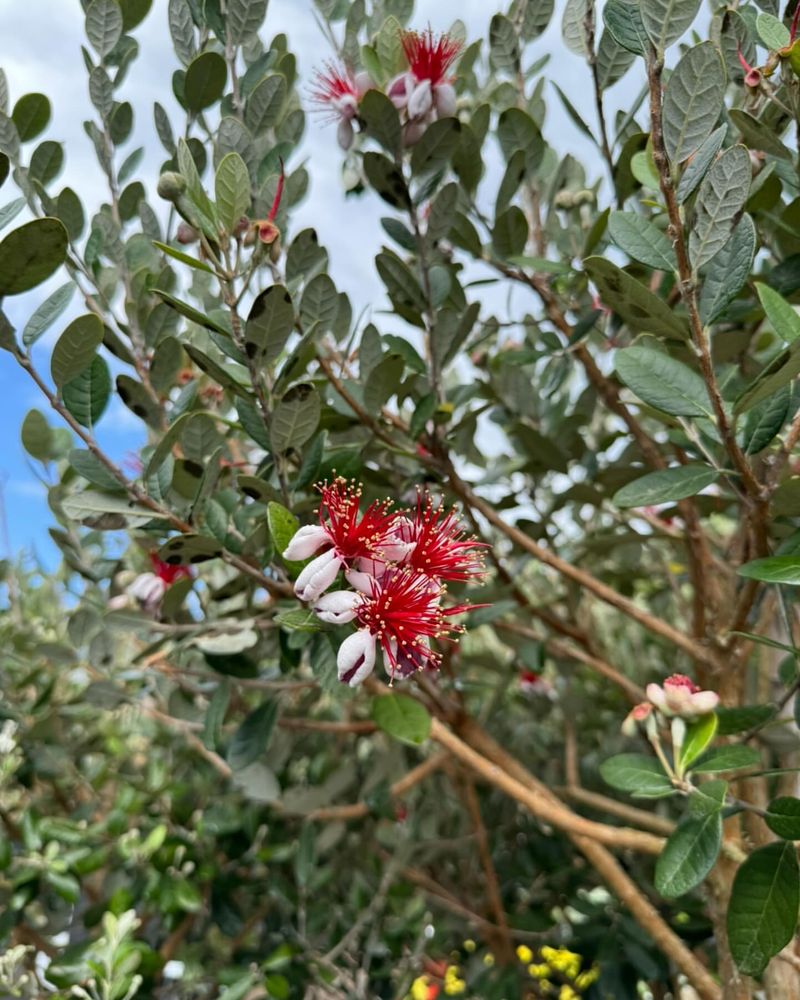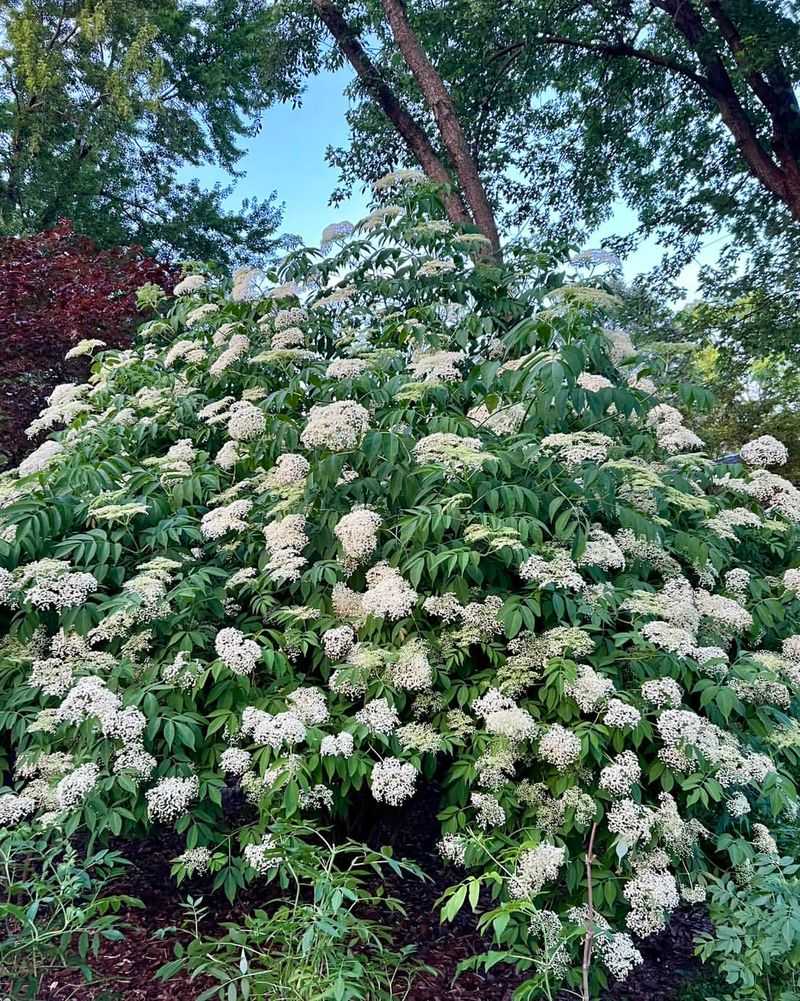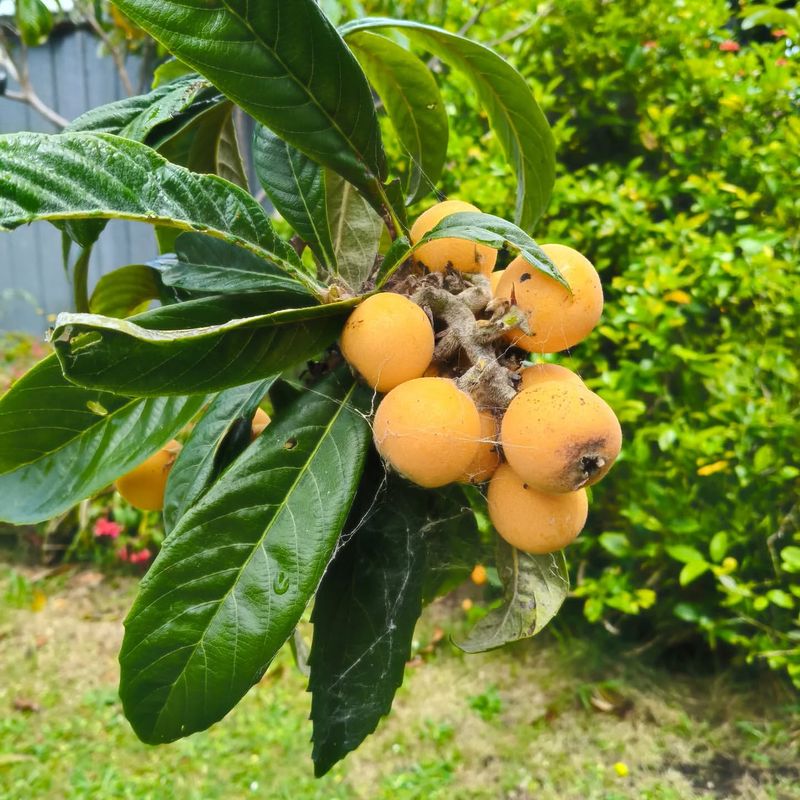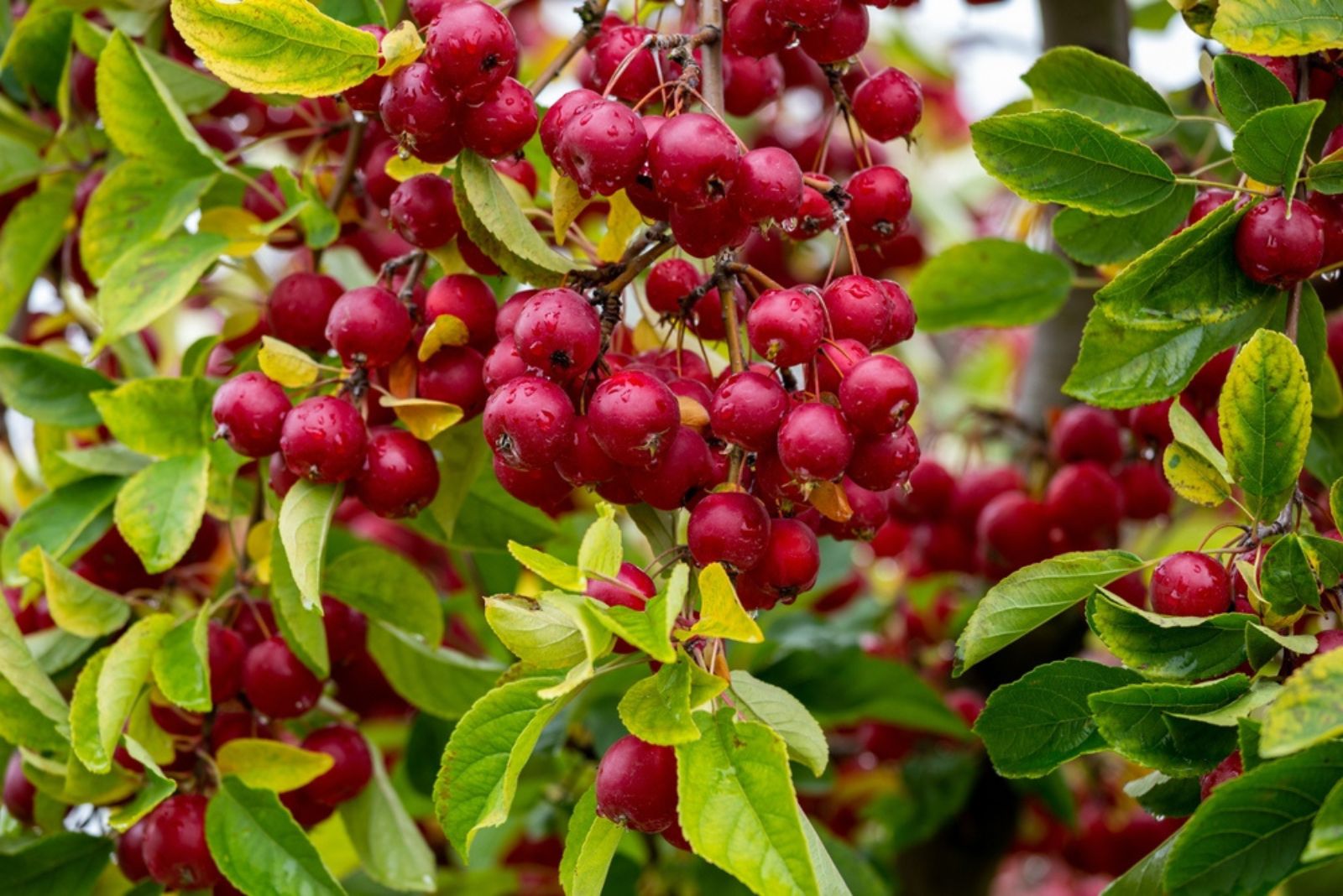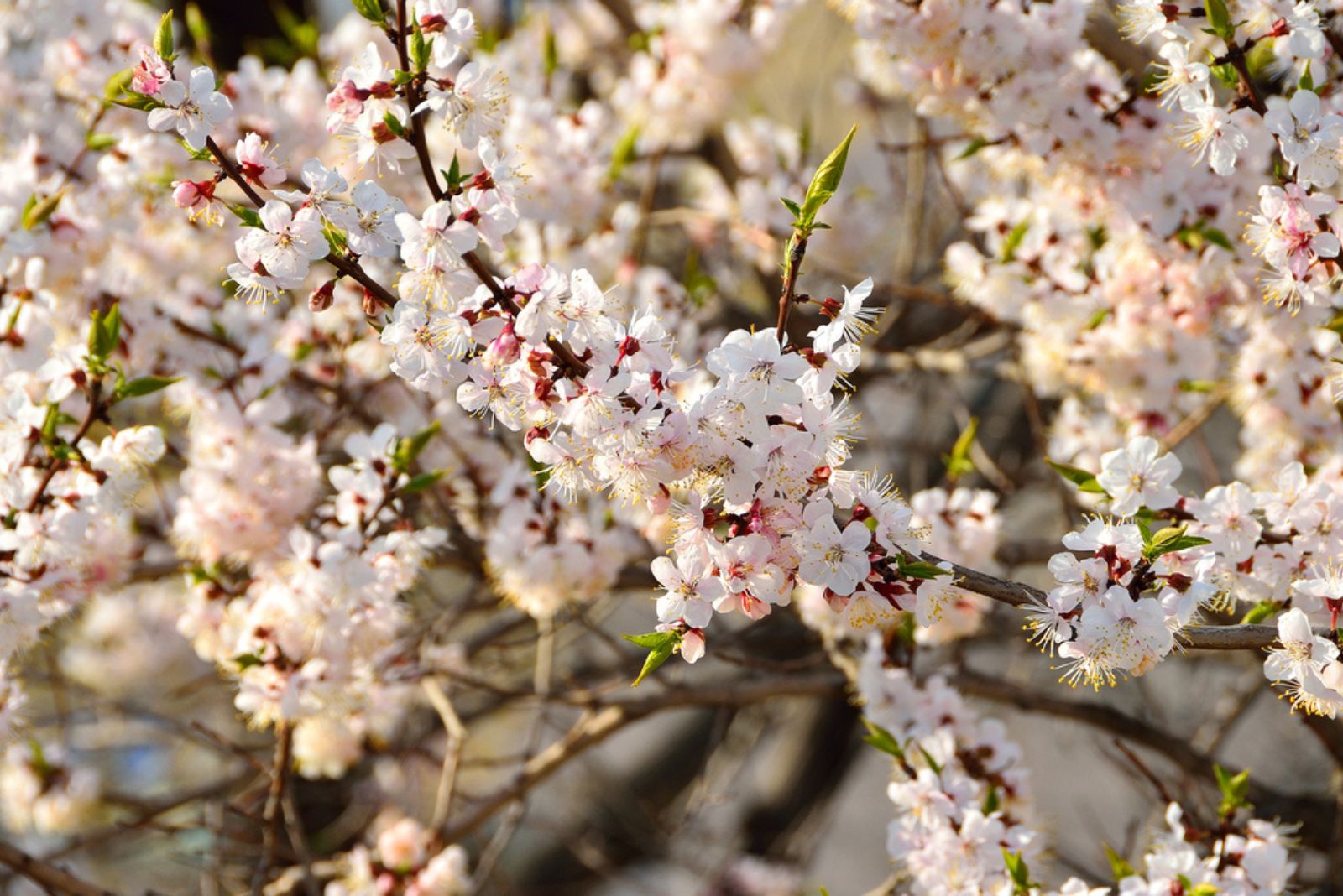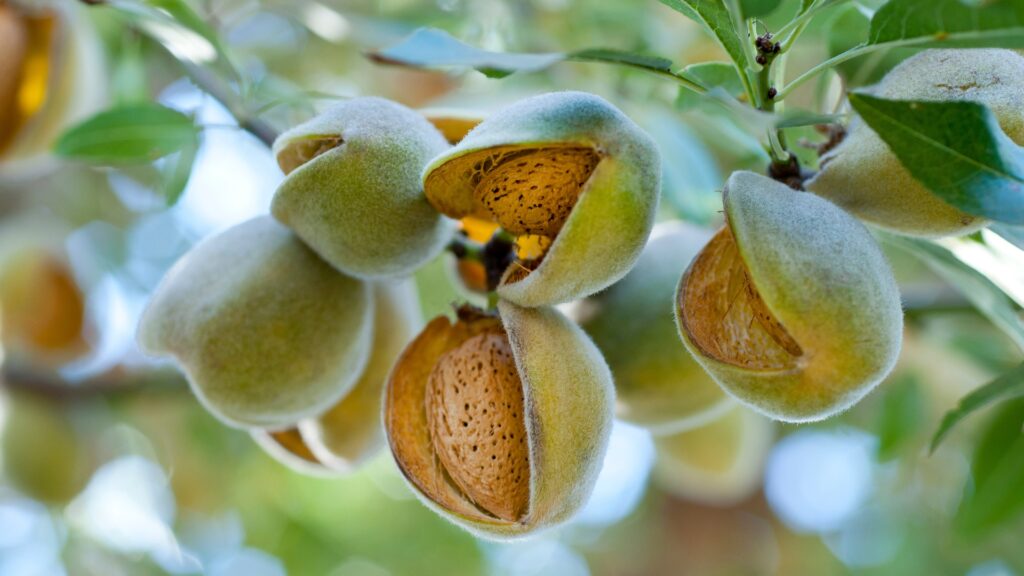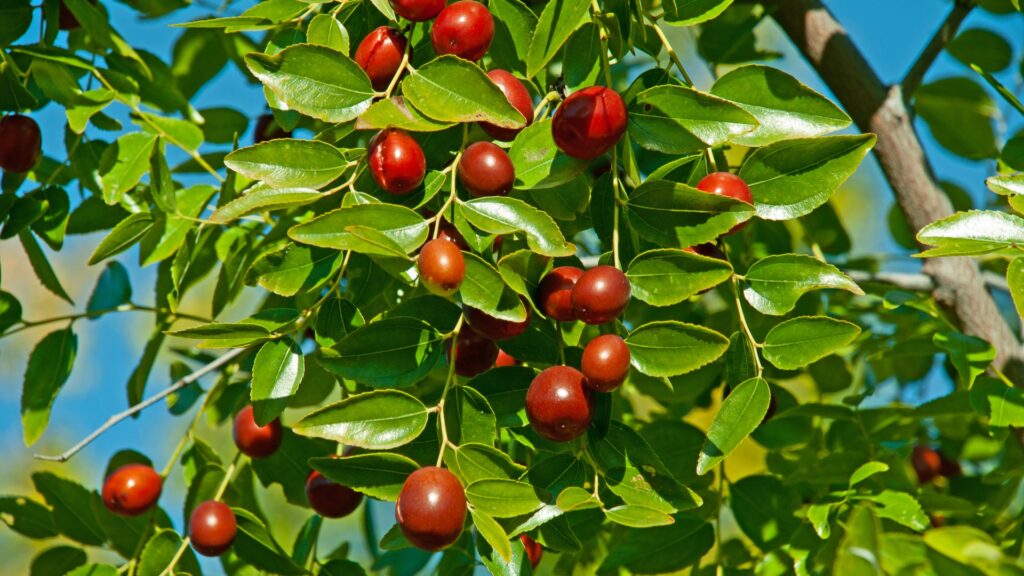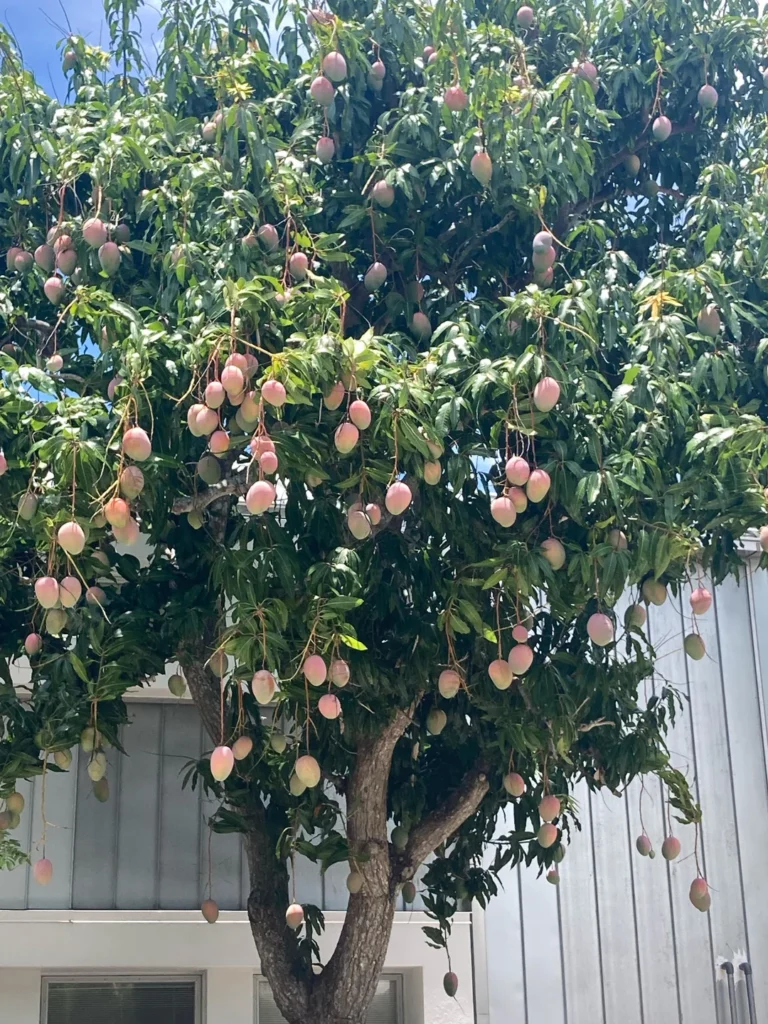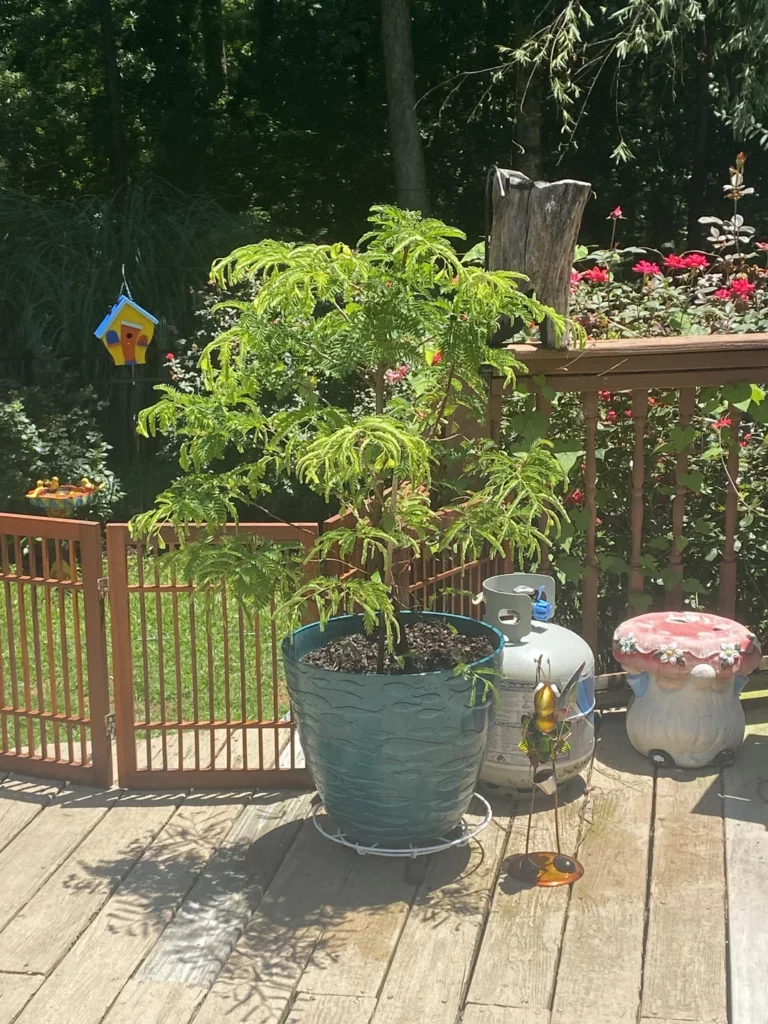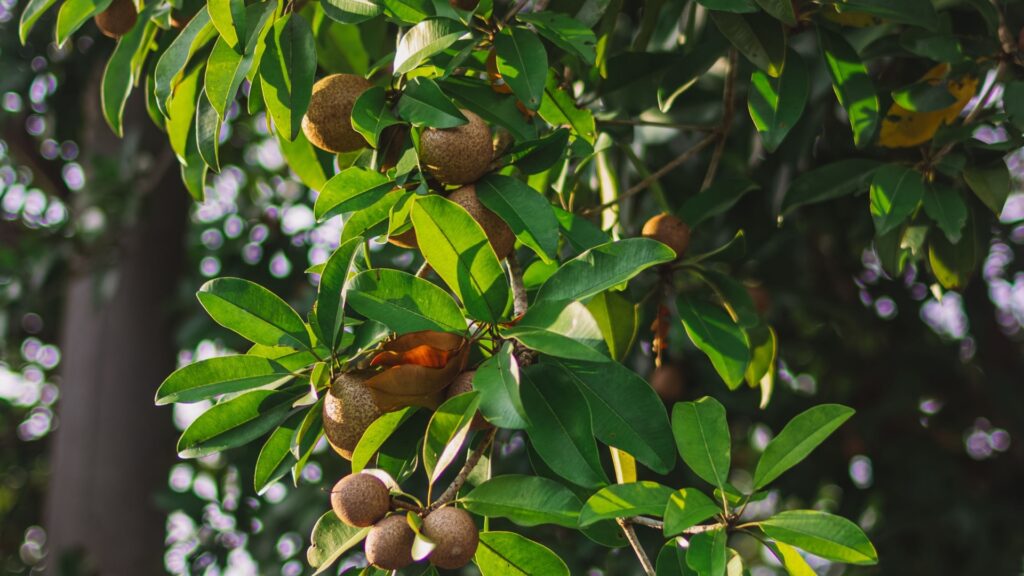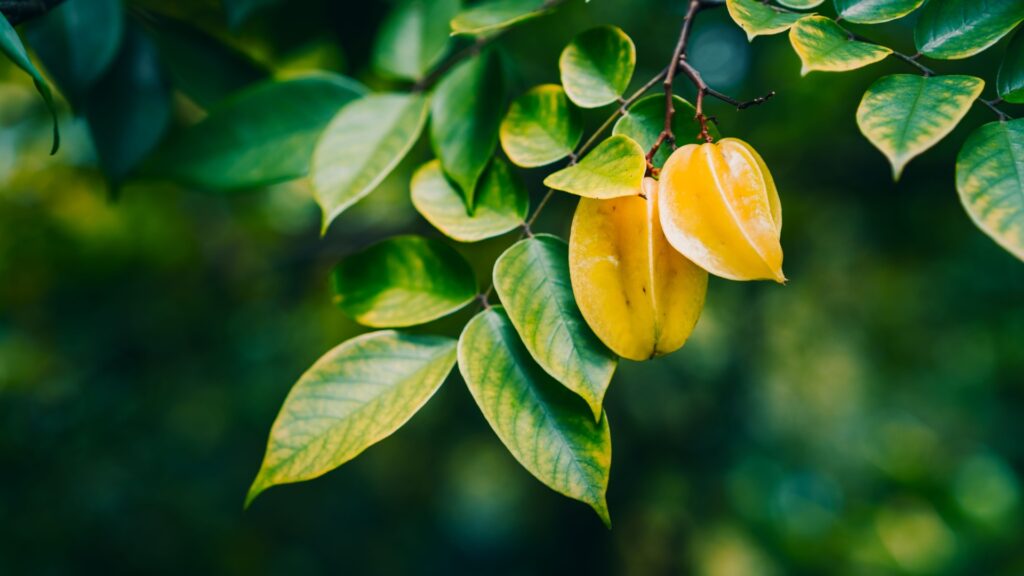Thinking of planting a fruit tree in your yard? Hold your horses—because not all that glitters is golden (or ripe). While fruit trees can turn your garden into a paradise of color and flavor, some varieties are ticking time bombs disguised as tasty treats.
These 28 problematic picks are better left out of your landscape. From pest magnets to disease factories, they’ll have you biting off more than you can chew. Arborists and horticulturists alike warn that some fruit trees bring more hassle than harvest—leaving you stuck with a whole lot of mess and very little reward.
Before you dig in, make sure you’re not sowing the seeds of regret. Let’s get to the root of which trees could turn your backyard dream into a high-maintenance nightmare.
1. Apple Tree
A backyard full of crisp apples sounds like a dream—until reality kicks in. These trees are magnets for pests and diseases, demanding constant care just to keep them alive. Before you know it, you’ll be spending more time spraying and pruning than actually enjoying those apples.
And let’s not forget the mess! Fallen fruit turns into a sticky, bug-infested disaster that attracts everything from ants to wasps. Unless you’re ready for a non-stop cleanup mission, this might not be the sweet addition to your yard you imagined.
2. Pear Tree
Planting one of these sounds like a great idea, but it quickly becomes a headache. Pear trees are highly susceptible to fire blight, a nasty bacterial disease that spreads fast and wipes them out before you can even enjoy a single fruit. The constant upkeep can turn your peaceful garden into a full-time job.
Then there’s the endless fruit drop—mushy pears covering your lawn, luring in wasps and other unwanted guests. If you’re not a fan of rotting fruit squishing underfoot, you might want to rethink adding this tree to your lineup.
3. Fig Tree
At first glance, these trees seem like an exotic and rewarding choice. But their aggressive roots have other plans, stretching out to invade pipes, sidewalks, and even your home’s foundation. Fixing the damage they cause can be a serious (and expensive) nightmare.
Then there’s the fruit—sweet, delicious, and apparently irresistible to every ant and bird in the neighborhood. Once they start dropping, you’ll have a sticky mess that turns your yard into a magnet for unwanted critters.
4. Cherry Tree
These trees are absolutely gorgeous in bloom, but that beauty comes at a price. Cherry trees are prone to root rot, pests, and diseases that can weaken them over time. Keeping one healthy requires a lot of effort, and even then, it may not make it.
If you do get fruit, be prepared for an all-out battle with birds and bugs. The dropped cherries create a sticky, staining mess, making cleanup an ongoing chore. It’s a high-maintenance tree that can leave you regretting your decision.
5. Plum Tree
Plums may be delicious, but growing them isn’t as easy as it seems. These trees are constantly under attack from pests and fungal diseases, meaning you’ll need to stay on top of treatments to keep them alive. If you’re not up for a fight, they’ll take over your yard in no time.
And don’t forget the aftermath! Fallen plums rot quickly, turning into a mushy, wasp-attracting disaster. Unless you enjoy stepping in fruit goo every time you walk outside, this might not be the tree for you.
6. Peach Tree
Few things sound better than biting into a juicy homegrown peach. But before that happens, you’ll have to deal with peach tree borers—pests that burrow into the trunk and slowly destroy the tree from the inside out. Keeping them away is a never-ending struggle.
Even if you win the pest battle, fallen peaches create a sticky, smelly mess that attracts bees and other unwelcome visitors. Unless you’re ready to be on constant cleanup duty, this tree might bring more frustration than fruit.
7. Mulberry Tree
These trees don’t just drop fruit—they unleash a purple nightmare. Mulberries stain everything they touch, including sidewalks, patios, and even your shoes. If you don’t want your yard looking like a crime scene, think twice before planting one.
Then there’s the bird problem. Mulberry trees attract flocks of feathered friends who feast on the fruit and leave behind plenty of… evidence. Unless you enjoy daily cleanups, this tree is more trouble than it’s worth.
8. Pomegranate Tree
Pomegranates may be packed with antioxidants, but their trees are packed with problems. The fruit often splits open before you can even pick it, leaving behind a sticky, bug-infested mess. Cleaning up after them is no small task.
Pruning is another constant chore since the dense canopy can quickly get out of control. If you’re looking for a low-maintenance tree, this one might just leave you feeling more stressed than satisfied.
9. Quince Tree
A tree with old-world charm sounds appealing, but quince trees have a habit of causing headaches. The fruit is hard, astringent, and often falls before it’s even ripe, turning your yard into a slippery hazard zone.
On top of that, these trees are prone to rust and other diseases that require constant attention. If you’re not up for a high-maintenance project, you might want to pass on this one.
10. Persimmon Tree
The fruit might be delicious, but this tree comes with a messy downside. Once persimmons ripen, they drop to the ground, creating a sticky, slippery situation that’s perfect for attracting pests. Walking through your yard becomes an obstacle course.
And then there’s the pruning. Without regular maintenance, these trees grow wild and unruly. If you want a neat, tidy garden, this tree might not be the best fit.
11. Apricot Tree
This sun-loving tree may seem like a great addition to your yard, but it’s not all sweet rewards. It’s highly prone to bacterial canker and other diseases, meaning you’ll need to stay on top of treatments to keep it healthy. One bad season, and you could lose an entire harvest.
The fruit drops quickly and rots fast, attracting bugs and creating a sticky disaster underfoot. While fresh apricots are delicious, the amount of care and cleanup involved might leave you feeling like they’re more trouble than they’re worth.
12. Nectarine Tree
Think this tree will bring an easy harvest? Think again! Nectarines are highly sensitive to pests and diseases, demanding constant attention. Without careful monitoring, you could lose your fruit before it even ripens.
Once the nectarines start falling, the cleanup begins—squishy fruit littering the ground attracts insects and can quickly become a mess. While the sweet taste is tempting, the work required to keep these trees thriving might have you reconsidering.
13. Olive Tree
A Mediterranean dream? Maybe. But in reality, this tree can be a messy nightmare. Fallen olives stain anything they touch—driveways, patios, even your shoes. Add in the need for regular pruning, and you’re signing up for a lot of maintenance.
These trees also attract pests, making them even more work to manage. While fresh olives sound appealing, the constant cleaning and upkeep might make this tree more of a hassle than a highlight in your garden.
14. Walnut Tree
At first, this tree seems like a great idea—majestic, shady, and full of nutritious nuts. But there’s a catch! It releases a chemical called juglone that can be toxic to many plants, making it hard to grow anything nearby.
Then there’s the issue of the hard-shelled nuts, which drop and create a tripping hazard. If you’re not up for raking up nuts and worrying about what will (or won’t) grow around it, this tree might not be the best fit for your yard.
15. Avocado Tree
Homegrown avocados sound amazing, but the reality is much trickier. These trees are picky, requiring specific climates and well-drained soil to thrive. If the conditions aren’t just right, they’ll struggle to produce fruit.
Fallen avocados attract critters like raccoons, turning your yard into a wildlife buffet. While the idea of fresh guacamole is tempting, the challenge of growing and maintaining an avocado tree might make you think twice.
16. Citrus Tree
Oranges, lemons, limes—what could go wrong? A lot, actually! These trees are prone to pests and diseases, meaning they require constant monitoring and care. Without the right conditions, they may not produce much fruit at all.
Fallen citrus quickly rots, attracting flies and creating a stinky mess. While fresh citrus sounds refreshing, the effort required to keep these trees thriving might have you looking for an easier alternative.
17. Papaya Tree
A tropical delight? Possibly, but this tree brings its fair share of challenges. With its tall, thin trunk, it’s prone to snapping in strong winds, which can be a real hazard if you’re in a storm-prone area.
Overripe papayas drop quickly and rot, attracting pests and turning cleanup into a constant chore. While fresh papaya is undeniably delicious, the risks and upkeep might make it more trouble than it’s worth.
18. Pineapple Guava Tree
This tree is unique, but it’s not the easiest to manage. Its thick foliage can harbor pests, and the fruit has a habit of dropping before it’s fully ripe. If you’re not paying close attention, you might end up with more waste than harvest.
Regular pruning is a must to keep it from becoming an overgrown mess. While the fruit has a tropical appeal, the upkeep involved might make you think twice before planting one.
19. Elderberry Tree
Packed with health benefits, but also packed with problems! These trees produce small berries that drop and stain everything they touch. If you don’t keep up with cleanup, your yard could become a sticky, berry-filled disaster.
They also require careful pruning to prevent them from turning into an unruly jungle. While elderberries are great for syrups and teas, the mess and maintenance might make this tree more trouble than it’s worth.
20. Loquat Tree
Exotic and intriguing, but also incredibly messy. Loquats ripen fast and drop just as quickly, covering the ground in sticky, fermenting fruit. If you don’t clean up regularly, the mess will attract pests and create an eyesore.
These trees also require frequent pruning to keep their shape and prevent overcrowding. While loquats are tasty, the constant care they demand might have you reconsidering their place in your garden.
21. Crabapple
Sure, crabapples have that cute spring blossom moment, but once the flowers fade, you’re left with the real issue: constant fruit drop. The tiny apples fall everywhere, staining sidewalks, attracting bugs, and creating way too much yard drama.
Unless you’re into making jelly on a weekly basis or raking constantly, it’s not worth it. Plus, some varieties are prone to issues like apple scab and fire blight, which just adds even more maintenance. If you’re set on a crabapple, go for a sterile ornamental type that doesn’t fruit—you get the flowers without the mess.
22. Manchurian Apricot
It might sound exotic and low-key charming, but this tree brings more chaos than benefits. The Manchurian Apricot is known to be invasive in some regions, spreading aggressively and crowding out native plants.
And the fruit? Meh. It’s small, drops fast, and honestly doesn’t taste great unless you’re into super tart, low-sugar stone fruit. It also creates a mess underfoot—fallen fruit attracts pests, gets mushy, and can turn your yard into a slip zone. If you’re looking for an edible apricot, this one’s not the move.
23. Almond Tree
Almonds might seem like a smart choice—healthy, versatile, and perfect for snacking. But these trees come with a laundry list of demands. They need just the right climate (hot, dry summers and mild winters) and tons of water, making them a tricky fit for most backyards. If conditions aren’t ideal, you’re looking at poor yields or a sickly tree.
And the mess? Fallen nuts and shells scatter everywhere, creating a crunchy hazard underfoot. Plus, they attract squirrels and rodents, who will happily dig up your yard for a taste. Unless you’re ready to micromanage your microclimate, you might want to leave almonds to the professionals.
24. Jujube Tree
At first glance, the jujube tree sounds perfect—drought-tolerant and low-maintenance, right? Not so fast. While it’s tough as nails, it’s also invasive in some areas, spreading via suckers and taking over your garden beds before you even realize what’s happening.
And the fruit? Sure, it’s edible, but once those little dates start falling, they turn hard as rocks and litter your yard. Step on one, and you’ll know it. Between the unwanted spreading and the cleanup, this so-called “easy” tree can become a bigger headache than you bargained for.
25. Mango Tree
Mangoes are the epitome of tropical indulgence, but growing a mango tree in your backyard isn’t all sunshine and sweet fruit. These trees require a very specific climate—hot, dry conditions—and are highly susceptible to fungal diseases like anthracnose, which can quickly ruin the harvest.
And then there’s the mess: fallen mangoes create a sticky nightmare. Not only do they stain surfaces, but they attract an army of fruit flies and pests. Plus, the tree’s large size and dense foliage require frequent pruning to keep it in check.
26. Tamarind Tree
Tamarind trees might add an exotic touch to your garden, but they come with their fair share of challenges. For one, they can grow quite large and require plenty of space to spread out. If your yard is on the smaller side, a tamarind tree could quickly take over, overshadowing other plants in your garden.
The fruit itself is a tangy treat, but it often falls while still green, turning into a sticky, decaying mess that attracts insects. On top of that, tamarind trees are heavy feeders and need constant attention to keep them healthy.
27. Sapodilla Tree
This tropical tree may sound like a sweet addition, but it comes with some serious drawbacks. Sapodilla trees grow slowly but become massive over time, making them unsuitable for small yards. Their extensive root systems can also interfere with sidewalks, foundations, and plumbing if not carefully managed.
The fruit, while tasty, tends to drop when overripe—creating a sticky, ant-attracting mess that’s hard to keep up with. Add in the need for warm, humid conditions and constant pruning, and you’re left with a high-maintenance tree that might not be worth the effort unless you live in the perfect climate (and love sweeping your yard).
28. Starfruit Tree
With its quirky, star-shaped fruit, the starfruit tree might seem like a fun, exotic choice—but it’s more complicated than it looks. These trees require warm, frost-free conditions and are sensitive to even short cold snaps. In less-than-perfect climates, they’ll struggle or die back entirely.
The fruit itself can be prolific, dropping frequently and quickly rotting on the ground—creating a slippery hazard and a pest magnet. If you’re not vigilant with cleanup, things can get out of hand fast. And a heads-up: starfruit is toxic to people with kidney issues, so it’s not the safest option for every household. Unless you’re ready for high care and constant attention, this tree might be more trouble than its novelty is worth.

